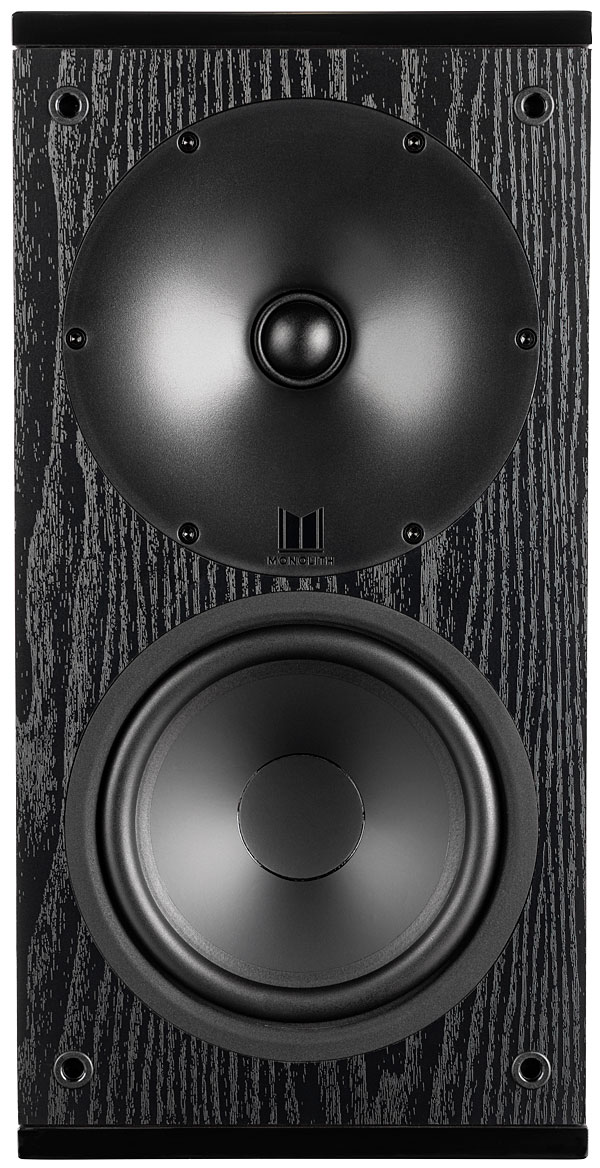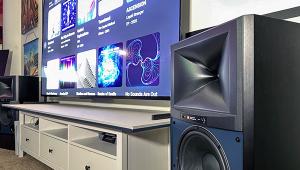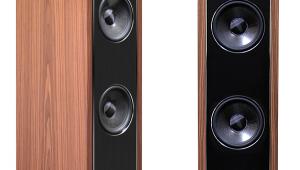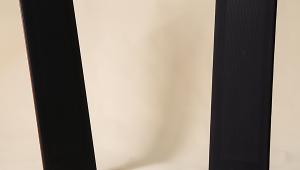Monolith By Monoprice Encore T6 Speaker System Review

AT A GLANCE
Plus
Very accurate, natural tonal balance
Impressive bass extension
Remarkable center-channel off-axis consistency and timbral match with towers
Minus
Towers are sensitive to placement
Some non-linearities at loudest playback levels
Generic looks (grilles-on)
THE VERDICT
With its impressive accuracy and peerless price, this Monolith by Monoprice Encore System is the new speaker value champ.
The story of how Monoprice parlayed its success as a humble purveyor of computer peripherals into its current status as a direct-to- consumer A/V gear powerhouse will have to wait for another day, mostly because I don't know it. But I do know this much: the torrent of ultra-high-value speakers and electronics, desktop audio, and even pro audio designs that have bubbled up from the Monoprice spring over the past few years is all but unprecedented in my decades in the audio/video world.
The latest gush this flow has brought forth is the Monolith by Monoprice Encore T6 speaker system seen here. This suite consisting of towers, center, and two-way surrounds checks in at just over $1,400—hundreds, or even thousands, less than many established, well-regarded speaker- makers charge for arrays of similar size and type. How do they do it?
I don't know that, exactly, either, but presume the answer lies in bare-bones cosmetics, factory design efficiencies, and the scaled economies of direct-to-consumer sales and hyper-efficient overseas manufacturing. And, as Crazy Eddie said long, long ago, "Volume! Volume! Volume!"
Since each member of this Encore quintet deserves a closer examination, I'm going to work backwards, beginning with the B6, a medium-size two-way bookshelf design relegated in this setup to surround-channel chores. The B6 is visually dominated by the huge waveguide surrounding its one-inch dome tweeter. What is a waveguide? In this instance, it's effectively a horn that controls and shapes the tweeter's upper-mids-to-high-frequency output to better match that of the woofer at the upper end of its operating range. Done right, this makes a speaker's directivity—its spread of sound over all frequencies of interest in all directions— considerably more even, which translates to "better" (more accurate, or uncolored) sound in real-world rooms. And the "why" here is that reflected sound, which anywhere other than outdoors or in an anechoic chamber inevitably makes up a good proportion of what reaches our ears, will have the same tonal balance as the direct sound coming from the speaker.

Wide-range waveguide design and integration is tricky, but the advent of affordable, computer- powered 3-D acoustical modeling and measurement has driven a recent flush of such designs, almost entirely in Europe. Not to put too fine a point on things, but the Encore B6 is a ringer for the Burchardt S400, a well-regarded design from a small Danish maker, though the Danish speaker costs about six times as much and employs a rear passive radiator where the Monolith deploys a simple port.
The Encore C6 center-channel follows a familiar pattern, doubling up the woofers in a horizontal layout, with the same big waveguide- tweeter dominating the middle. However, where the other Encore speakers are vented, the C6's cabinet is sealed. The T6 towers triple the bet, stacking three of the same "6.5- inch" woofers below the waveguide- tweeter. (That's the screw-to-screw mounting dimension, which is what the industry seems to use these days. In my book, this is a 5.25-inch woofer, the actual diameter at the surround apex.)
All three models are simply constructed, using plain black wood- grain vinyl wrap MDF cabinets. The cabinets are internally braced, with single, inexpensive plastic ports used on the T6 and C6, though the tower's port has a much larger diameter. The T6 also gets a somewhat fancier input hookup, with double linked terminals in the usual bi-wire configuration.
All three arrive with simple black fabric grilles affixed via plastic push-posts—no magic magnetic floating grilles at this price. There's nothing fancy, here, obviously, but the Encores struck me as carefully made within their strictly budgeted manufacturing parameters, and rather attractive in a very understated high-tech mode. I also found them to be much better-looking with the grilles off, which is how I did all my listening during this evaluation.
Setup
The Encore T6 towers arrive with nicely machined, height-and-angle- adjusting solid metal outrigger feet affixed by machine screws. Other than adjusting those, setup of the suite required nothing more than shifting my existing speakers around and connecting the speaker cables. I began my listening "backwards," first auditioning the Encore B6 bookshelf speakers as the main left/right pair, run full-range.
Performance
Over a couple of days of music listening, both casual and close, I was consistently struck by the B6's clear, transparent presentation and honest tonality. Having uncovered no obvious sonic warts, I moved on to comparing them against my ancient-but-excellent Energy Veritas 2.2 standmount three-way speakers. (Were these still available, they would cost at least five or six times the Monolith's modest price in today's money.)

There were differences: the Monoliths sounded obviously—well, not brighter, exactly, but more sharply etched and a bit "quicker" over the top three or so octaves. They also projected images in a more forward manner than the Veritas 2.2s, which tend to image at and behind the plane of the speakers. But otherwise, I was amazed at how closely the two speakers tracked on cut after cut. Voices as disparate as Diana Krall, Johnny Cash, and Tracy Chapman's sounded tonally matched; bass extension and weight were virtually identical; and cymbal- and-brushes sparkle, while clearly livelier with the B6 pair, was about equal in prominence. In short, what I was hearing was either two loudspeakers with the same exact colorations and shortcomings—highly unlikely even merely statistically, and well known by me from countless other Energy comparisons to be untrue—or two with equal tonal accuracy and freedom from strong resonances, plus a very similar octave-to- octave balance.
The Ginger Baker Trio's Going Back Home—a superb recording—sounded powerfully lifelike, with icicle-like snare cracks, atmospheric cymbals, and solidly woody bass on tracks like the Thelonious Monk standard "Straight No Chaser." This album combines Bill Frisell's refracted, cubist guitar playing and Charlie Haden's understated but inventive bass with the impossible-to- characterize whatever-it-was that the late Mr. Baker did: "drumming" hardly seems to cover it. In this setting Baker was somehow able to swing his cymbals-and-snare timekeeping in a classically jazz, "late" way, while still pouring out the hard-driving, push-the-beat toms and double-kickdrum frenzy we remember so well from Cream, at one and the very same time! It's not poly-rhythmic, it's poly-feel-ic, and quite wonderful once you get your toe-tapping around it.
My next listening step was to replace the Encore B6 bookshelf speakers with the Encore T6 towers. You'd think two speakers so similar, with identical driver elements, would sound the same, and for the most part they did. But there were definite differences. First and most obviously the tower speakers delivered a lot more bass, particularly over the room- mode-exacerbated third octave. But they also had a very slightly different midrange cast: marginally warmer, or perhaps more relaxed. (On a carefully level-matched listen to mono pink noise, the T6 sounded faintly more "hoo" to the B6's "hee.")






























































